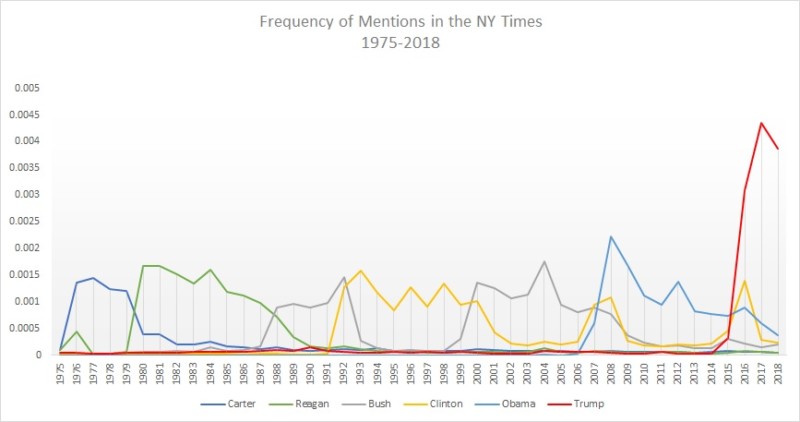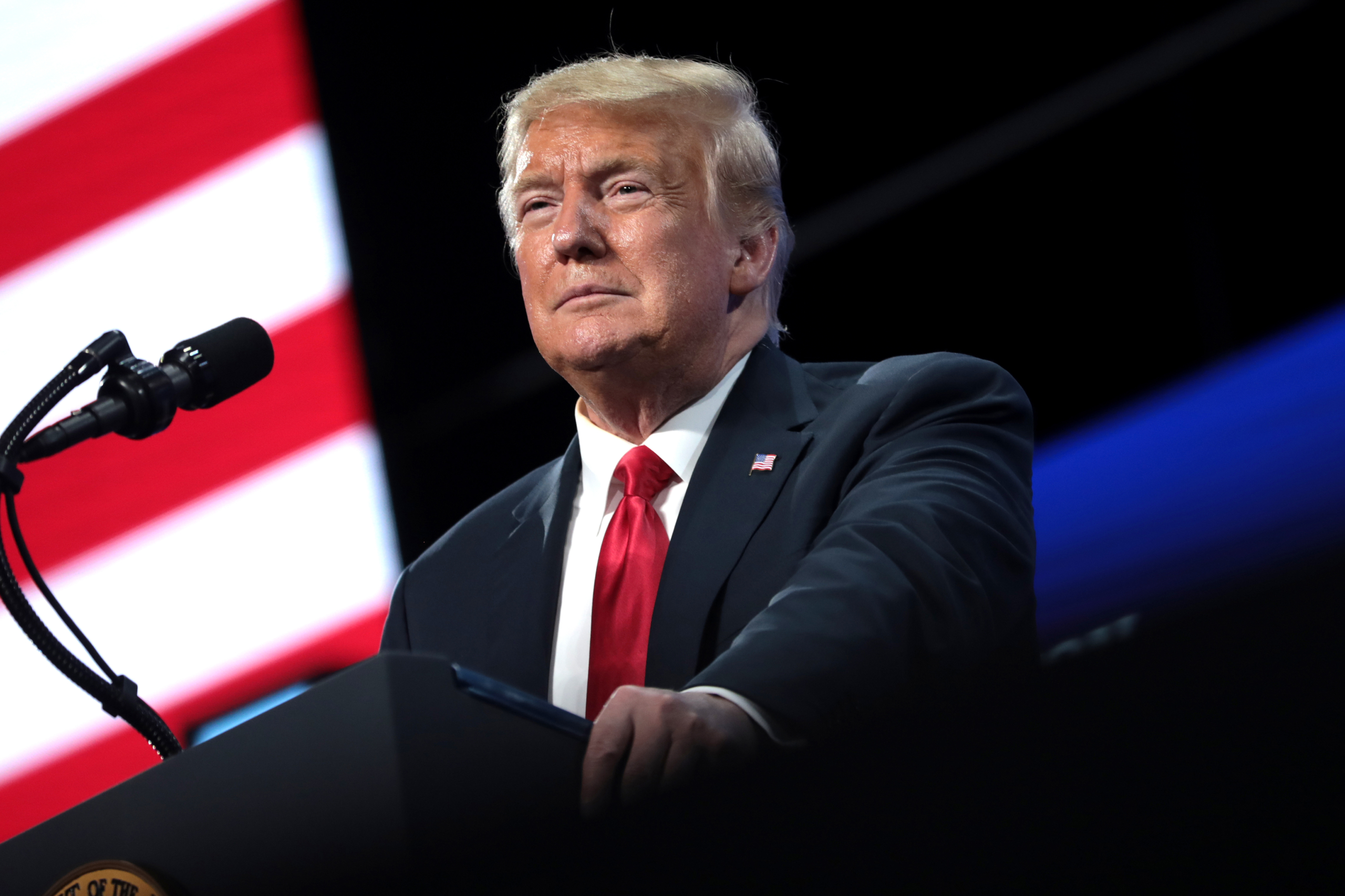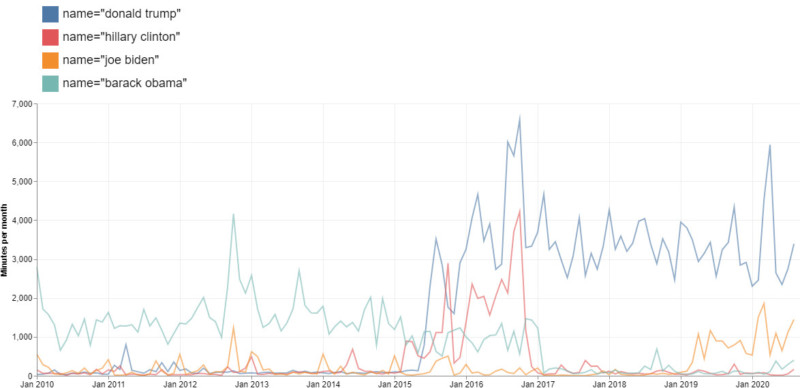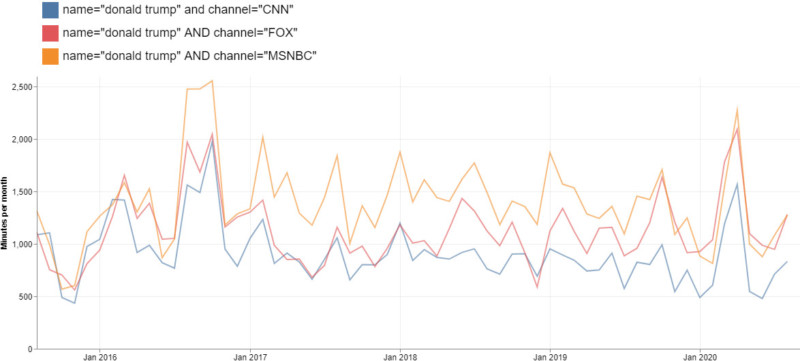In a previous story, I demonstrated that the quantity of coverage devoted by the print media to Donald Trump is without historical precedent.

In 2018, “Trump” was the fourth-most-used word in the New York Times. On average, Trump was directly mentioned two to three times in every article, and indirectly mentioned an additional once or twice. This average included all articles published by the Times (including weather, sports, fashion, etc.). Trump has ceased to be just a topic of news; he seems to be the prism through which we interpret and discuss everything.
Trump has been great for business. The Times saw a record spike in subscriptions over the course of the 2016 election cycle, due largely (in the Times’ own accounting) to the mutual antagonism between Trump and the paper of record. The publication now boasts a record-high number of paid subscribers. It is not alone: many outlets have seen sharp increases in readership and subscribers by capitalizing on (and reinforcing) the obsession with Trump.
News media have basically been running with 2016 campaign–level attention on Trump for four years straight now.
A new tool from Stanford University’s Computer Graphics Lab reveals that cable news has undergone a similar transformation. The Stanford Cable TV News Analyzer enables users to track cable news screen time for anyone they’d like, from 2010 to present. Looking at Trump relative to Barack Obama, Hillary Clinton, and Joe Biden reveals a number of striking patterns:
First, the cable news media seems to be consistently giving Donald Trump about twice as much airtime per day on average as it gave Obama from 2010 to 2012. Comparisons between Trump and his 2016 and (especially) 2020 rivals are also dramatic: Trump received significantly more airtime than Hillary Clinton virtually every month of the 2016 campaign, and Joe Biden is nowhere close in this cycle.
During the 2016 campaign, from August 2015 to November 2016, cable news aired about two hours per day (123 minutes) of just Trump talking. And, of course, this is just a fraction of the total coverage, as every clip aired of Trump speaking is typically bookended with other people talking about what Trump was going to say or had just said—building ten-minute segments out of two minutes of Trump talk.
What is most striking in the data, however, is what happened after the election—because almost nothing changed. In 2017, as Trump began his presidency, he averaged 110 minutes of speaking time per day; in 2018 it was 114 minutes; in 2019, 112 minutes. So far in 2020, it has been 110 minutes. If people are exhausted, it’s no surprise: news media have basically been running with 2016 campaign–level attention on Trump for four years straight now.
This becomes even clearer when we break out Trump airtime by network. The coverage is extremely steady from 2015 through the present; fluctuations notwithstanding, the overall trend in the data is essentially flat:
A lot of attention has been paid to the relationship between Fox News and Trump. Although Trump does get a bit more airtime on Fox than CNN, the difference is actually not that great. In fact, the network that consistently gives Trump the most airtime is not Fox News, but MSNBC. The channel’s viewers may hate Trump, but MSNBC keeps serving those viewers Trump content. It doesn’t matter whether or not viewers are watching to feed their outrage; all that seems to matter is that people are watching.
Trump hates the media, the media hate Trump—but they are also obsessed with each other. And Americans can’t seem to look away: like print media, cable news outlets have enjoyed record ratings and huge increases in ad revenue by fetishizing the president.
There is wall-to-wall coverage for every outrageous word and action—often leading outlets to inadvertently report incorrect information in their bid to keep everyone glued to their seats. They fact-check Trump constantly, but often only after airing—and, in many cases, repeating—misinformation. This can create what psychologists call an “illusory truth effect,” where people end up remembering the falsehood, forgetting the correction, and then attributing their misinformation to the very source that had tried to correct it!
In short, the media, the president, and the public seem to be locked into the world’s worst relationship triangle. And as we hurtle toward the 2020 election, we could be headed for an even more terrible breakup.
THE MEDIA TODAY: Did Stars and Stripes win the fallout from Trump’s ‘losers’ comment?
Musa al-Gharbi is a Paul F. Lazarsfeld Fellow in Sociology at Columbia University. His website is musaalgharbi.com.



